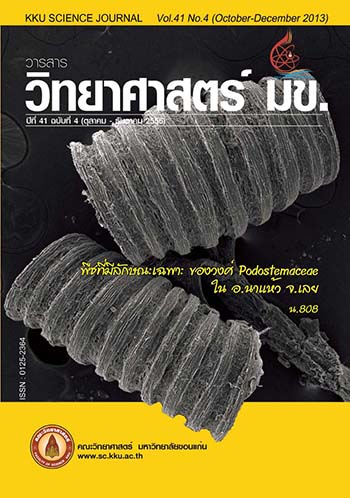Comparison of Growth and Lead Accumulation of Sunflower and Sorghum in Lead Contaminated Soil
Main Article Content
Abstract
This research was conducted in the greenhouse to determine the concentration of lead accumulation in different parts of sunflower and sorghum planting in lead contaminated soil from Klity Village, Kanchanaburi province and comparison efficiency of lead translocation from soil into plants at harvesting of 35 days, 70 days and 105 days by considering BCF and TF. The results indicated that sunflower and sorghum accumulated lead to the highest concentration of 137.79 ± 20.14 mg kg-1 and 80.73 ± 12.52 mg kg-1 in 105 days, respectively. Both sunflower and sorghum were the highest lead accumulation in roots, stems and leaves, pericarps and seeds, respectively. The results showed the concentration of lead in seeds exceeded the standard for human consumption as food but did not exceed the standard as animal feed. The study of growth both sunflower and sorghum in lead contaminated and uncontaminated soil demonstrated the similar growth rate (P>0.05). The BCF was the highest efficiency of lead translocation from soils to accumulate in various parts of sunflower in 105 days and TF was the highest efficiency of lead translocation from roots to shoots of sorghum in 35 days.
Article Details

This work is licensed under a Creative Commons Attribution-NonCommercial-NoDerivatives 4.0 International License.


